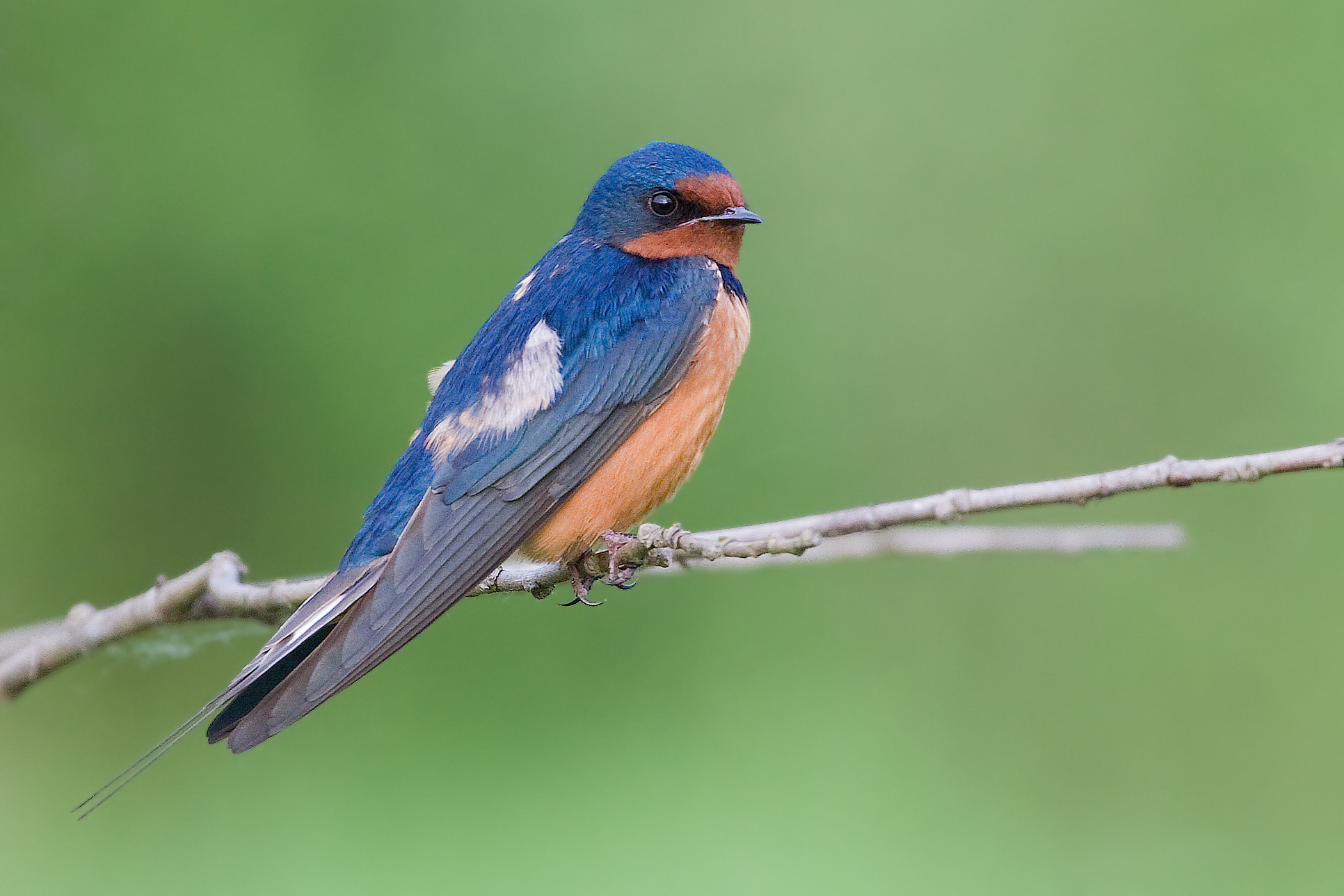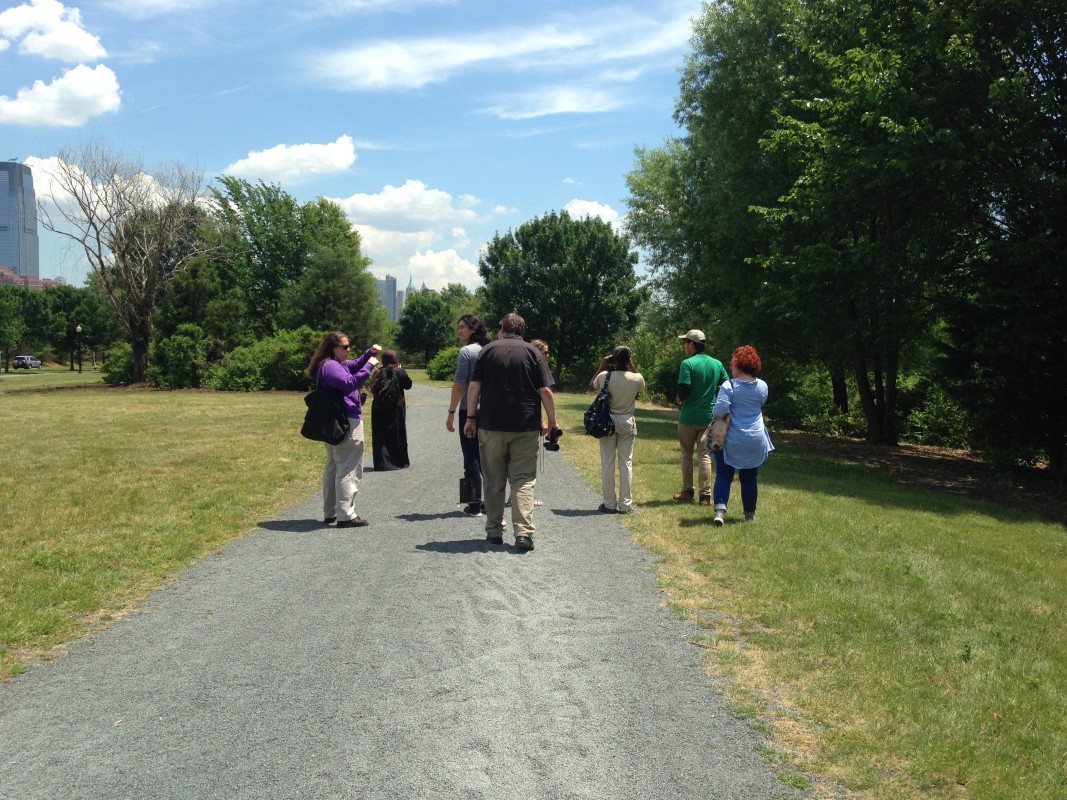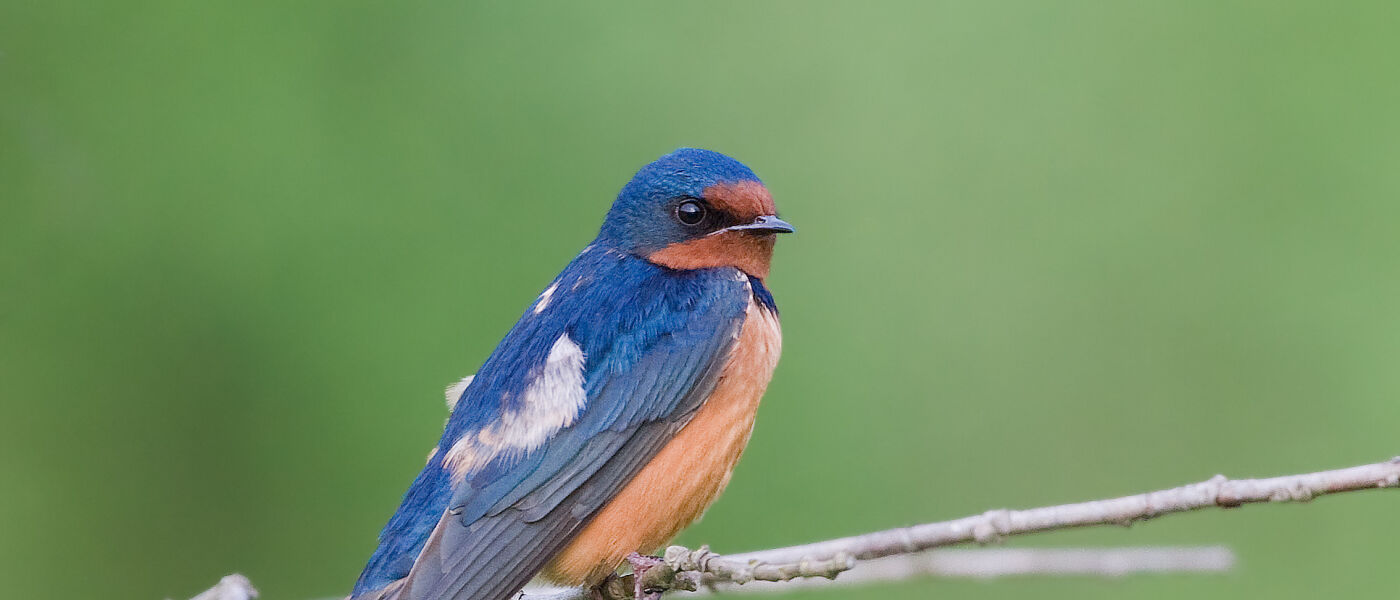Liberty State Park naturalists showcase urban habitat
A ruby-throated hummingbird whizzed by, too fast for all but Carlos Montufar, a Liberty State Park naturalist, to glimpse. With such a promising start and clouds enhancing the sunny skies, it was a picturesque day to explore an iconic local park.
 Joined by three park naturalists, several staff from Liberty Science Center learned more about our next-door neighbor during a lunchtime stroll. Noticing a flock of starlings, expert Chloe Lewis was able to inform us how this ubiquitous, introduced species has spread across the United States, largely by out-competing native species for nesting sites. This invasive species nests and fledges earlier than many native birds, which provides an advantage to successfully raising offspring.
Joined by three park naturalists, several staff from Liberty Science Center learned more about our next-door neighbor during a lunchtime stroll. Noticing a flock of starlings, expert Chloe Lewis was able to inform us how this ubiquitous, introduced species has spread across the United States, largely by out-competing native species for nesting sites. This invasive species nests and fledges earlier than many native birds, which provides an advantage to successfully raising offspring.
We also spotted multiple brown-headed cowbirds. While they are a native species, these birds don’t win any popularity contests, as they sneak their own eggs into other species’ nests. The unwitting host will then raise the young as its own, often at the expense of providing resources to its biological offspring. These brood parasites are a frequent sight in the park.
One favorite sighting was the agile barn swallows, discernible through their forked tail as they swooped and sliced through the air. These birds – annual migrants from South America – typically nest on man-made structures throughout the park. We were not lucky enough to catch one perching, so we had to settle for seeing their beautiful coloring through a field guide.
 Carlos captured a flying orange and black insect for closer examination. Just like the monarch butterfly, it relies upon the milkweed plant for its sustenance. We learned that the park intentionally cultivates milkweed to support monarch butterflies and other milkweed-dependent species. Liberty Science Center staff noticed unusual trees with pine needles pointing upwards, asked questions about woodpeckers, discussed the geology of New Jersey — all enthusiastically exploring new topics in this local green space.
Carlos captured a flying orange and black insect for closer examination. Just like the monarch butterfly, it relies upon the milkweed plant for its sustenance. We learned that the park intentionally cultivates milkweed to support monarch butterflies and other milkweed-dependent species. Liberty Science Center staff noticed unusual trees with pine needles pointing upwards, asked questions about woodpeckers, discussed the geology of New Jersey — all enthusiastically exploring new topics in this local green space.

Later, we learned that the area we were strolling through was formerly salt marsh habitat, teeming with cordgrass, oysters, and shorebirds. There is still remnant tidal salt marsh in the park, which provided some protection from the devastation of superstorm Sandy. As Sarajane Bruno explained to us, this unique ecosystem was transformed into farmland, and subsequent railroads changed the area into an industrial zone. Parts of this landscape remain off-limits to visitors, notably “Area 251,” referring to 251 acres contaminated with chromium.
Blog post by Lauren Morse. Lauren is a Teacher Programs Developer at Liberty Science Center.
